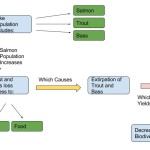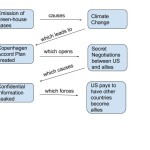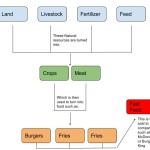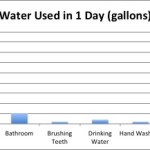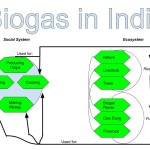1. I believe that the actions a person takes are far more important than their particular virtues. A person can say anything they want, but they will not be taken seriously if they do not follow what they say. If a politician speaks about how pollution is a rising problem and must be stopped, yet continues to pass laws favoring high-pollution companies, most of the public won’t consider them an ecocentric person. Likewise, if a person complains all day about how global warming is a huge issue, but continues to drive a gas-guzzling Hummer to work everyday, their words mean nothing. However, this does not mean that virtues are not important. Moral virtues are what, most of the time, lead to moral actions. If a businessman truly does not believe that global warming is a real issue, he most-likely will not take any steps towards fixing it. Virtue and action may go hand and hand, but what you think means very little if it is the opposite of what you do.
4. In my opinion, the ecosystem should matter more in the way it impacts humans rather than its own sake. The first reading for this module consisted of a man trying convince an audience that a certain national park should not be turned into an energy-creating dam. Although this article is very well written, I disagree with his main argument. While the park may be a “grand” place, the benefits we can gain from building a dam a far too important to overlook. The clean energy that a dam will provide can power almost an entire city, which, in the long run, will end up helping the ecosystem. This is just one example, however, I feel most situations like these should be looked at from an anthropocentric point of view. If we pass up on opportunities to evolve and benefit as a species just to preserve nature, we miss the chance to progress as humans.
5. I also believe that the pleasure and pain of humans is much more important than that of non-humans. One of the reasons why humans are on top of (or even removed from) the food chain is because we learned to work together to get things such as food and warmth. Ever since the beginning of our species, this will usually result in the death of other animals to be used as meat and/or clothing. While we shouldn’t go out of our way to harm these other species, we also should not hesitate if we need to use them to benefit ourselves. While a horse or a dog may still be able to suffer, it comes nowhere near close to the severity of a human-being, our own kind, being in pain. Species sticking together is a natural part of life and while we shouldn’t go out of our way to make non-humans be in pain or suffer, we should still prioritize us over them.

